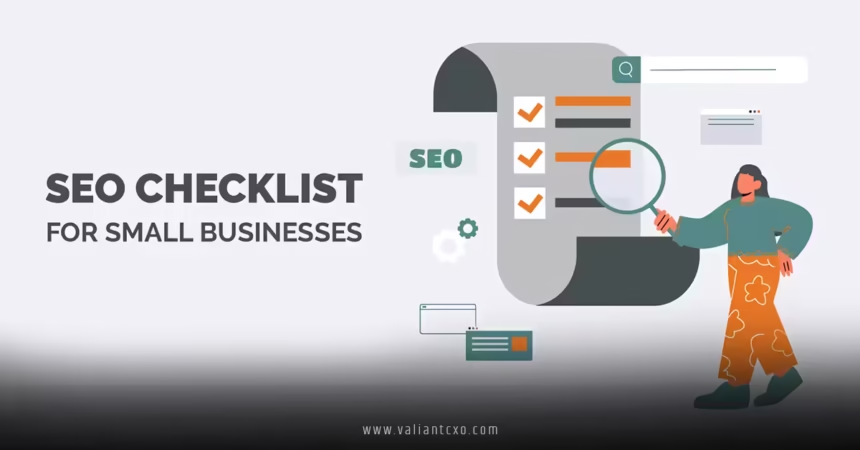Local SEO checklist for small companies is your ticket to standing out in a crowded digital marketplace. Imagine your small business as a cozy coffee shop tucked away on a bustling street. Without a bright sign or a welcoming vibe, passersby might miss it entirely. That’s where local SEO comes in—it’s the neon sign that draws local customers straight to your door. For small companies, mastering local SEO isn’t just a nice-to-have; it’s a must to compete with bigger players. This article is your step-by-step guide, packed with actionable tips to boost your local visibility, attract nearby customers, and grow your business. Ready to make your business the talk of the town? Let’s dive into the ultimate local SEO checklist for small companies.
Why Local SEO Matters for Small Companies
Ever wondered why some businesses pop up first when you search “coffee shop near me”? That’s local SEO at work. For small companies, local SEO is like planting a flag in your community’s digital landscape. It helps you reach customers who are searching for products or services in your area, whether they’re using Google, Bing, or even voice assistants like Siri. According to BrightLocal, 46% of all Google searches are local, and 78% of local mobile searches lead to offline purchases. That’s a massive opportunity for small businesses to capture nearby customers.
The local SEO checklist for small companies ensures your business shows up in those “near me” searches, local map packs, and online directories. Without it, you’re leaving money on the table. So, how do you get started? Let’s break it down into manageable steps that any small business owner can tackle.
Step 1: Optimize Your Google Business Profile
Claim and Verify Your Profile
Your Google Business Profile (GBP) is the cornerstone of the local SEO checklist for small companies. Think of it as your business’s digital storefront on Google. If you haven’t claimed your profile yet, head to Google Business Profile and set it up. Verification is key—it’s like proving to Google that you’re a legit business. You’ll usually get a postcard with a code mailed to your business address. Don’t skip this step; an unverified profile is like a locked door to potential customers.
Fill Out Every Detail
Once verified, fill out every field in your GBP. Add your business name, address, phone number (NAP), hours, and website. Be precise—consistency is critical. If your address is “123 Main St.” on your website but “123 Main Street” on Google, it can confuse search engines and hurt your rankings. Upload high-quality photos of your storefront, products, or team to make your profile pop. Profiles with photos get 42% more requests for directions and 35% more clicks to websites, per Google’s own data.
Choose the Right Categories
Picking the right business category is like choosing the perfect hashtag—it helps the right people find you. Be specific. If you’re a bakery, don’t just select “Food”; choose “Bakery.” Add secondary categories if they apply, like “Wedding Cakes” or “Gluten-Free Bakery.” This step in the local SEO checklist for small companies ensures Google knows exactly what you offer.
Step 2: Nail Your On-Page SEO
Optimize Your Website for Local Keywords
Your website is your digital home base, and it needs to scream “local.” Sprinkle the keyword local SEO checklist for small companies naturally throughout your site, especially in page titles, meta descriptions, and headers. For example, your homepage title could be: “Local SEO Checklist for Small Companies: Boost Your [City] Business.” Include your city or neighborhood in key places, like your “About” page or service descriptions. If you’re a plumber in Seattle, phrases like “Seattle plumbing services” should appear naturally in your content.
Create Location-Specific Pages
If you serve multiple areas, create dedicated pages for each location. A landscaper in Austin might have pages for “Landscaping in North Austin” and “Landscaping in South Austin.” Each page should have unique content—don’t just copy and paste. Google hates duplicate content, and so do your visitors. These pages strengthen your local SEO checklist for small companies by signaling to search engines that you’re relevant in specific areas.
Add Schema Markup
Schema markup is like a secret handshake with search engines. It’s code that tells Google exactly what your business is about. Use Schema.org to add local business markup, including your NAP, business hours, and reviews. Tools like Google’s Structured Data Markup Helper make this easier than it sounds. This step in the local SEO checklist for small companies can give you a leg up in local search results.
Step 3: Build Consistent NAP Citations
What Are NAP Citations?
NAP stands for Name, Address, Phone Number. Citations are mentions of your NAP on other websites, like Yelp, Yellow Pages, or local chamber of commerce sites. Think of citations as digital breadcrumbs leading customers to your business. The local SEO checklist for small companies emphasizes consistency—your NAP must be identical everywhere. Even a slight mismatch (like “St” vs. “Street”) can confuse Google and dilute your rankings.
Where to Build Citations
Start with major directories like Yelp, Bing Places, and Apple Maps. Then, branch out to local directories, such as your city’s chamber of commerce or industry-specific sites. For example, a restaurant might list on OpenTable, while a lawyer could use Avvo. Use tools like Moz Local or BrightLocal to find and fix inconsistent citations. Aim for at least 50 high-quality citations to boost your local SEO checklist for small companies.
Step 4: Encourage and Manage Online Reviews
Why Reviews Matter
Reviews are the word-of-mouth of the digital age. They build trust and influence both customers and search engines. Google’s algorithm favors businesses with more reviews and higher ratings. According to BrightLocal, 87% of consumers read online reviews before choosing a local business. The local SEO checklist for small companies includes actively encouraging reviews to enhance your credibility.
How to Get Reviews
Make it easy for customers to leave reviews. After a purchase or service, send a polite email or text with a direct link to your Google Business Profile review section. Don’t beg or bribe—Google frowns on that. Instead, say something like, “Loved working with us? Share your experience on Google!” Respond to every review, good or bad, to show you care. A thoughtful response to a negative review can turn a critic into a fan.
Step 5: Leverage Local Content Marketing
Create Blog Posts with Local Flair
Content is king, even in local SEO. Write blog posts that resonate with your community. A pet store in Denver could write about “Top Dog Parks in Denver” or “How to Prepare Your Pet for Colorado Winters.” These posts attract local readers and signal to Google that you’re a local authority. Incorporate the local SEO checklist for small companies into your content strategy by using local keywords and linking to other local businesses or resources.
Engage on Social Media
Social media isn’t just for cat videos—it’s a powerful tool for local SEO. Share local events, customer stories, or behind-the-scenes posts on platforms like Instagram or Facebook. Use local hashtags, like #ChicagoEats for a restaurant in Chicago. Engage with followers by responding to comments and sharing user-generated content. This builds community and indirectly boosts your local SEO checklist for small companies.
Step 6: Optimize for Mobile and Voice Search
Make Your Website Mobile-Friendly
Most local searches happen on mobile devices. If your website looks like a jumbled mess on a phone, you’re losing customers. Use Google’s Mobile-Friendly Test to check your site. Ensure fast load times, easy navigation, and clickable phone numbers. A mobile-optimized site is a non-negotiable part of the local SEO checklist for small companies.
Prepare for Voice Search
Voice assistants like Siri and Alexa are changing how people search. Queries like “find a bakery near me” are common. Optimize for conversational phrases by including FAQs on your site, like “Where’s the best bakery in [City]?” Answer these questions naturally in your content. This tweak to your local SEO checklist for small companies can help you capture voice search traffic.
Step 7: Track and Measure Your Progress
Use Analytics Tools
You can’t improve what you don’t measure. Tools like Google Analytics and Google Search Console show how people find your site and which keywords drive traffic. Check your GBP insights to see how many calls, direction requests, or website visits you’re getting. Tracking is a critical part of the local SEO checklist for small companies—it shows what’s working and what needs tweaking.
Adjust Based on Data
If your analytics show that “plumber in [City]” drives more traffic than “emergency plumbing,” focus on optimizing for that term. If your reviews are stagnant, ramp up your review requests. Data-driven decisions keep your local SEO checklist for small companies effective and up-to-date.
Conclusion
The local SEO checklist for small companies is your blueprint for standing out in your community’s digital landscape. From optimizing your Google Business Profile to building citations, encouraging reviews, and creating local content, each step brings you closer to dominating local search. It’s not about overnight success—it’s about consistent effort. Start small, tackle one step at a time, and watch your business climb the ranks. Ready to make your small company the go-to choice in your area? Grab this local SEO checklist for small companies and get to work—your customers are searching for you right now!
FAQs
1. What is the most important step in the local SEO checklist for small companies?
The most critical step in the local SEO checklist for small companies is optimizing your Google Business Profile. It’s your primary touchpoint for local searchers and directly impacts your visibility in Google’s map pack and search results.
2. How long does it take to see results from the local SEO checklist for small companies?
Results vary, but you might see improvements in 3-6 months with consistent effort. Factors like competition, citation consistency, and review volume can affect timelines.
3. Do I need a website to follow the local SEO checklist for small companies?
While a website isn’t mandatory, it significantly boosts your local SEO efforts. A well-optimized site with local keywords and schema markup enhances your visibility and credibility.
4. How can I get more reviews as part of the local SEO checklist for small companies?
Encourage reviews by sending follow-up emails or texts with direct links to your Google Business Profile. Make it easy, be polite, and always respond to reviews to build trust.
5. Can I handle the local SEO checklist for small companies myself, or should I hire an expert?
You can tackle many steps yourself, like optimizing your Google Business Profile or posting local content. However, for advanced tasks like schema markup or citation cleanup, hiring an SEO pro might save time and boost results.
Read More:valiantcxo.com


